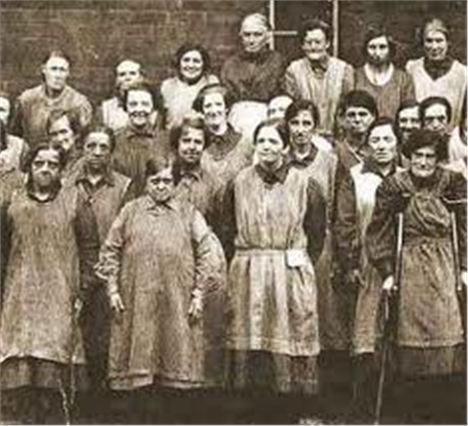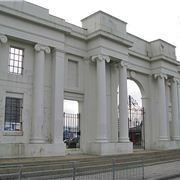STUART HYLTON is clearly passionate about Manchester. He came in the sixties as a scruffy student and then stayed on. He has produced a book which hops and skips its way across the city cobbles, writing about ghostly apparitions one minute and the production of the Rolls Royce the next, evoking workhouse deaths alongside one of the world’s first bus services.
“Anyone educated in Manchester would certainly be dull and probably vicious.”
It is evident from just the first few pages that Hylton clearly knows his stuff. Not only does he have facts at his fingertips, but he has figures and quotations coming out of every pore. This is certainly a thoroughly researched book.
Soemtimes the layer upon layer of facts get in the way and hang around in isolation without context. For example, we find out that between September 1837 and August 1838, 295 inmates of the Manchester Workhouse died despite the fact that there were only 708 people living there on average.
These are certainly eye-watering statistics but they don’t give any insight into the appalling conditions there must have been or what life was like for the hapless unfortunates incarcerated within. There is no human story and yet that is the Manchester story.
 Please Sir, can I have some more?
Please Sir, can I have some more?
Where the The Little Book Of Manchester does come alive is in the quotations. Mancunians feel rightly proud of all they have achieved so reading the thoughts of bigwigs on grim-up-north Manchester and its working class denizens certainly raises a smile. The Duke of Wellington was strongly opposed to the railways because: “They encourage the lower classes to travel about.”
And when it came to Manchester University receiving its charter and becoming a university in its own right, not everyone foresaw that it would churn out more Nobel Prize Laureates than any other university in the country. The Times feared that it would undercut the important social distinction conferred by a degree whilst Saturday Review went even further, harrumphing: “Anyone educated in Manchester would certainly be dull and probably vicious.”
This is a book that tries to tell you a little bit of everything in the history of Manchester. To a certain extent it is engaging, and it certainly whets your appetite to learn more but that is its biggest problem. You never do. The ghost at the Palace Theatre had had all its supernatural shenanigans investigated in only nineteen words. The Bridgewater Canal only merits a page and a half.
There are a number of interesting sections in the book which reveal lesser-known aspects of Manchester’s history such as its role in the Civil War and its aviation past, but these are mixed with other parts which seem superfluous.
The chapter entitled ‘ Why is it Called That?’ includes such insights as Platt Fields being part of an estate owned by a family called Platt (you don’t say), that Sharston may be named after the now demolished Sharston Hall (don’t rock the boat with any more of these wild theories) and Newton Heath describes a New Town on the Heath (well I never).
Removing these pointless observations which seem like unnecessary filler would leave room for more detail in the rest of the book and even some more photographs, whose absence is felt particularly when discussing places, such as the pleasure gardens at White City, which have now changed beyond recognition. In this case, Currys and Furniture Village nestle behind the imposing white gateway rather than the botanical delights of the past.
This book feels like an index to another book. A list of things to read about. In more detail. Somewhere else.
The Little Book of Manchester is published by The History Press Ltd and is available on Amazon for £7.59.














